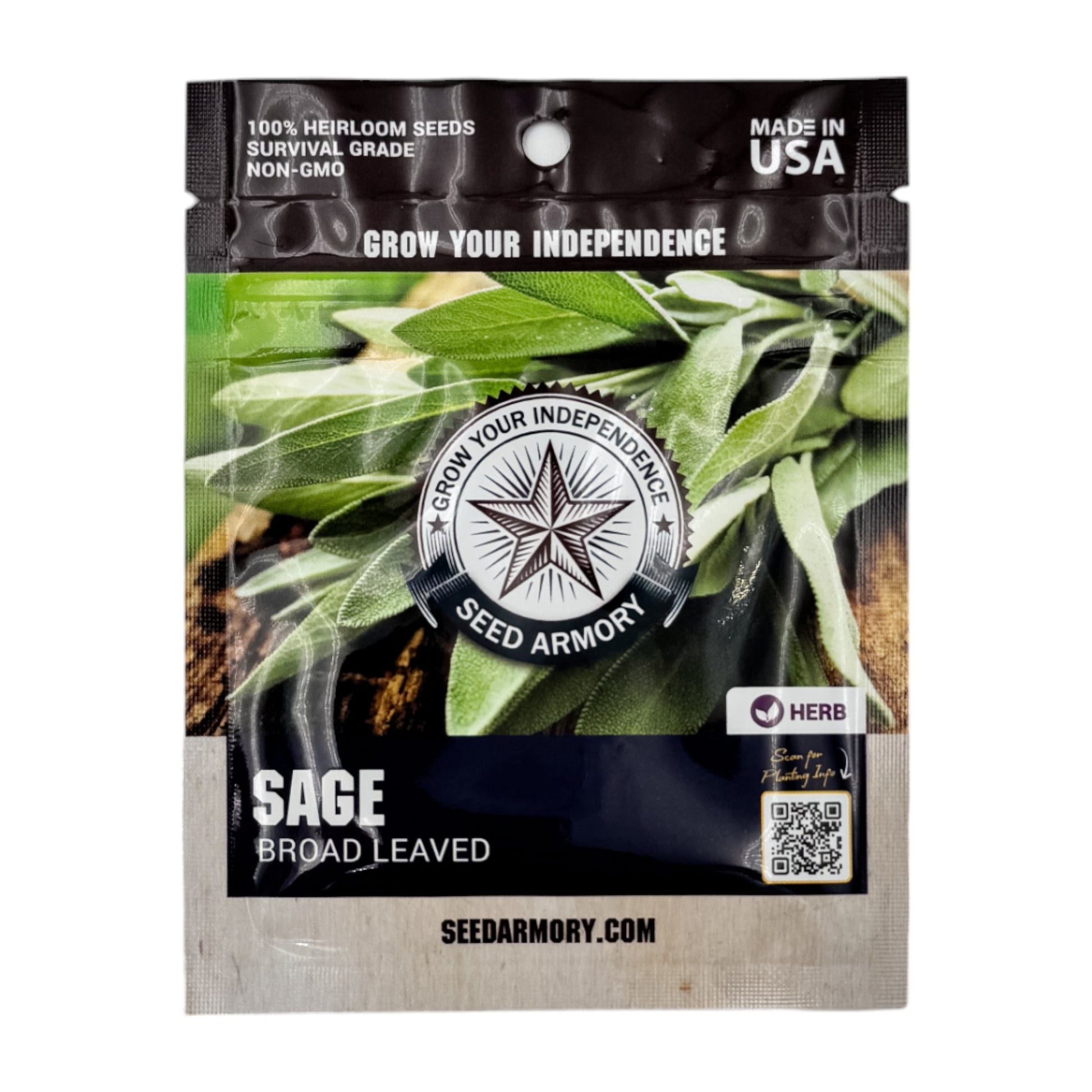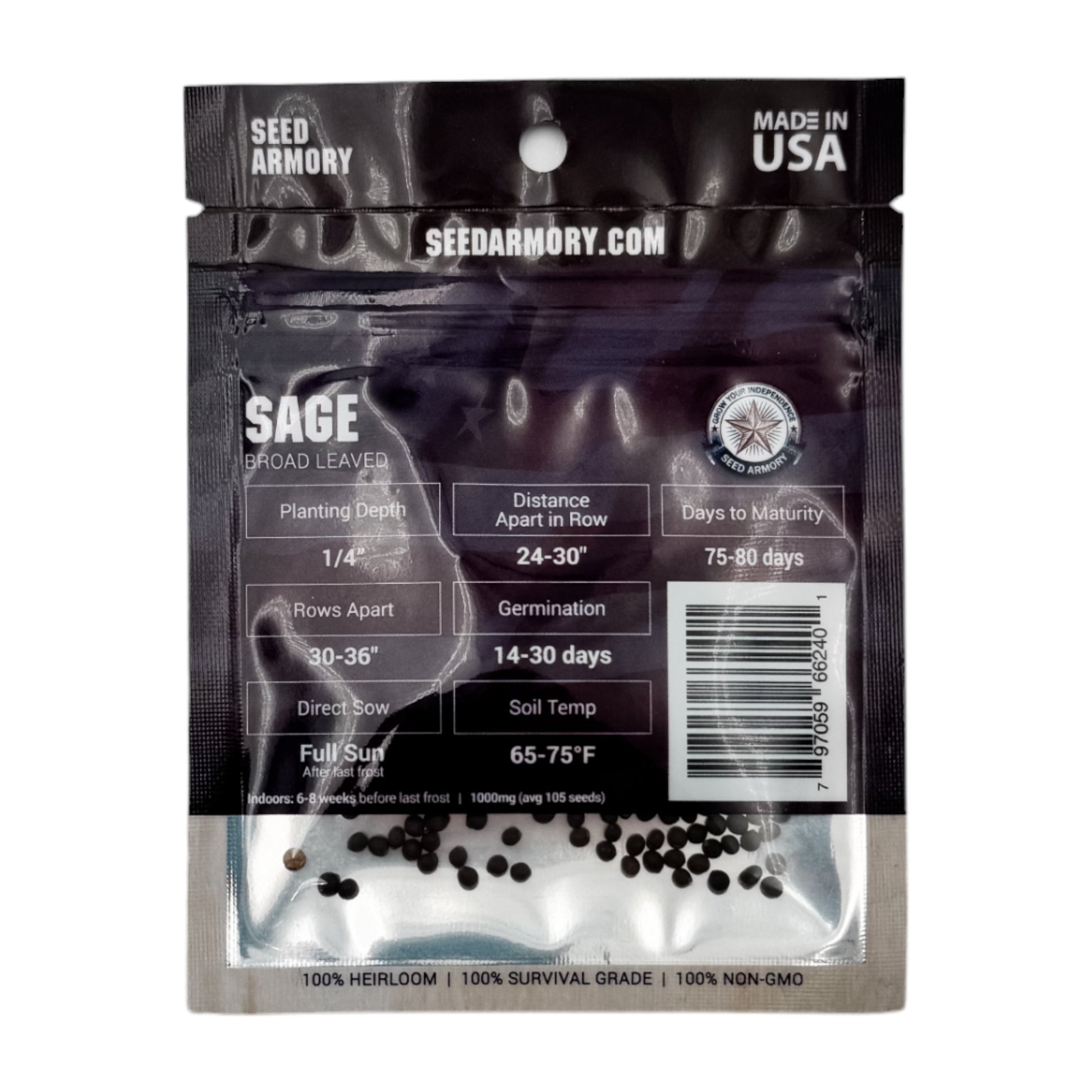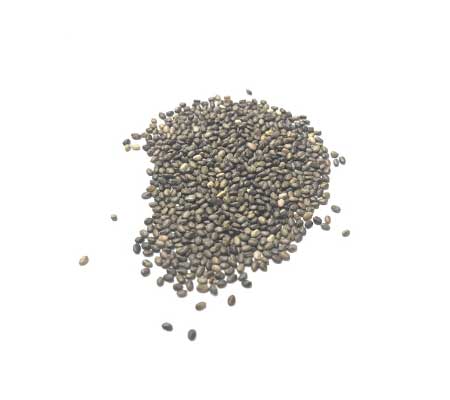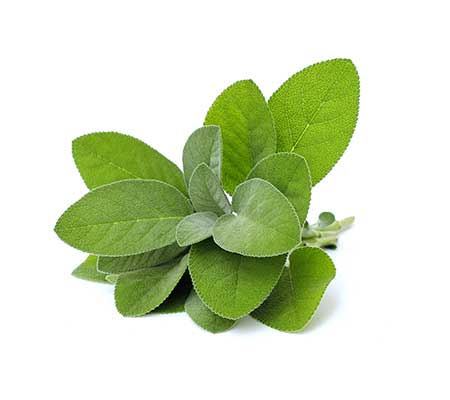- Type: Herb Seeds
Sage Seeds - Common
Packed in Resealable Long Life Mylar
Moisture Proof Packets
10+ Year Survival Seed Viability
- Category: Herb
- Type: Sage
- Variety: Common
- Family: Mint
- Botanical Name: Salvia officinalis
- Hardiness Zones: 3,4,5,6,7,8,9
- Growing Difficulty: 3
- Soil PH: 6.0 to 6.7
- Fertilizer Requirements: None
- Soil Type: Average to Rich, Loamy, Well Drained
- Germination (days): 14 to 30
- Soil Temp for Germination: 65-75°F
- Lighting Conditions: FULL SUN
- Days to Maturity: 75 - 80
- Planting Depth: 1/2”
- Distance Apart (in row): 24-30"
- Row Spacing: 30-36"
Sowing Instructions
DIRECT SOW IN FULL SUN WHEN SOIL TEMPS ARE ABOVE 60°F
Starting Indoors
6-8 WEEKS BEFORE LAST FROST
Growing Tips
We recommend starting your sage indoors about 6-8 weeks before the danger of last frost. The seeds should be sown on the surface of the soil if planting indoors with a soil temperature of about 65-70°F.
Keep your soil moist by misting with a spray bottle. The seeds take a while to germinate, and you should start to see sprouts in about 2-3 weeks. The germination rate of these plants is naturally low, so we recommend placing several seeds per cell and thin the varieties after they are about 2-3” tall.
Direct sowing is possible, but not recommended since the seeds take a long time to germinate in cooler spring soil. Plant alongside cabbage and carrots to prevent pests. Do not plant sage plants near cucumbers.
Culinary Uses
Sage is a flavorful ingredient that can really change the flavor of a dull dish. Frying sage will bring out a mellow flavor and can then be crumbled over many dishes to bring out a pop of flavor at the last minute of cooking.
Sage is also great to add in sauces, butters, marinades, pastries and even breads.
Some people also add sage to cocktails to balance the flavors and bring out a great herbal flavor.
Medicinal Uses
Sage has been used medicinally for generations. The leaf of the sage plant is the medicinal portion. People use sage for digestive problems, loss of appetite, gas, stomach pain, diarrhea, bloating, and heartburn. You may also use sage to reduce excess sweating and saliva, for depression, memory loss and Alzheimer’s disease.
Women have found sage to be a useful herb for painful menstrual periods, reducing excessive milk flow during nursing, reducing hot flashes during menopause. If you have a sore mouth, throat, or tongue, sage can be useful when applied directly.
Harvesting Crops
Sage, when grown from seed, should not be harvested until its second year of growth. The sage plant must become well established before harvesting to survive as a perennial plant.
You can harvest fresh sage leaves at any time, but the best time to harvest is in the mornings after the dew has dried.
The best flavor comes right before the plant goes to flower, but once flowering the flavor declines. Sage loses its flavor once heated, so we recommend adding it to your fresh hot dishes immediately before serving.
Harvesting Seed
Allow your plants to flower and produce seed heads. Harvest these heads individually as soon as they begin to dry. Pick the seed heads and allow them to dry thoroughly for a couple of weeks. Once completely dried, crush the seed heads in your hands to expose the seed.
Safely store your seeds in a cool dry place to be used in your next growing season.
Have a question?
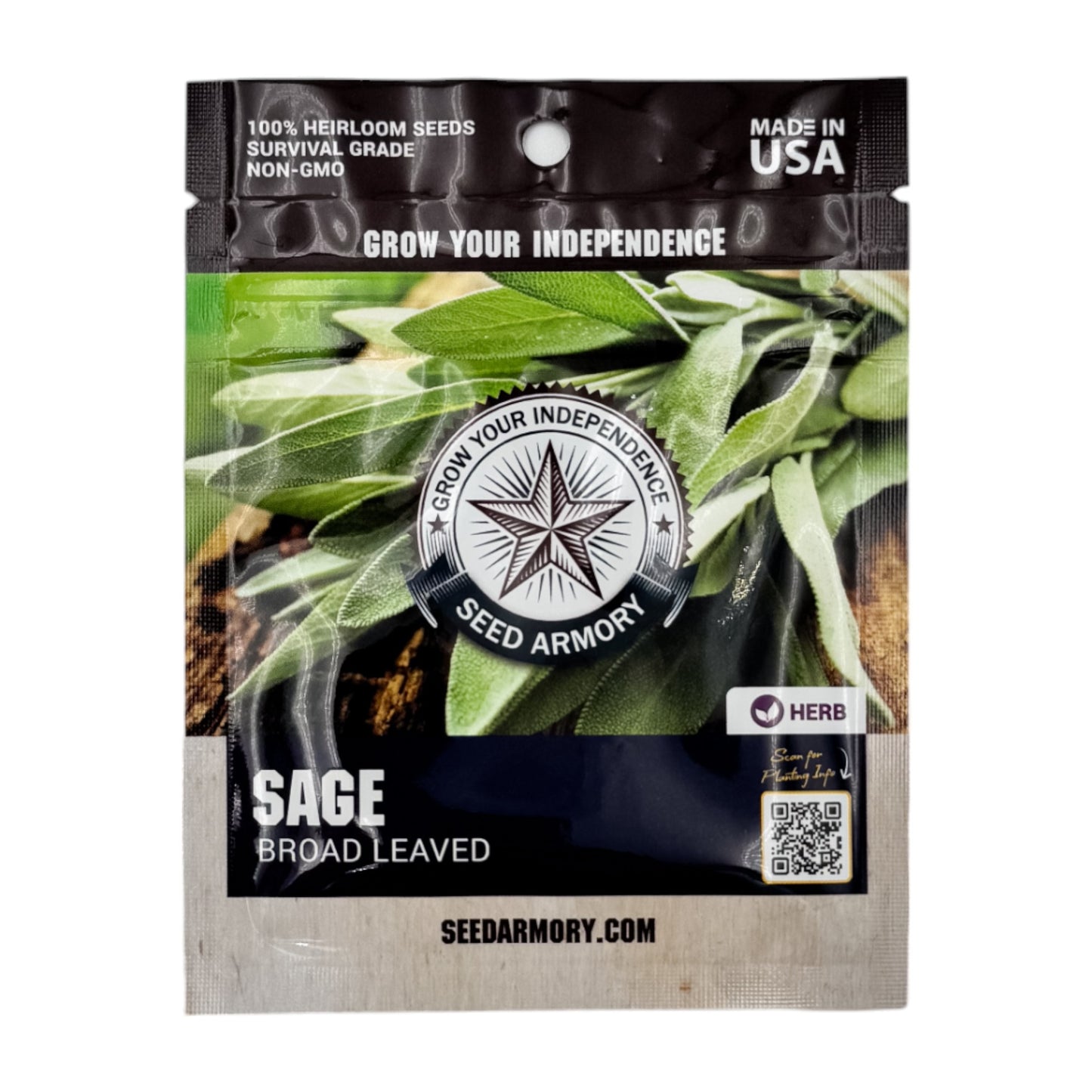
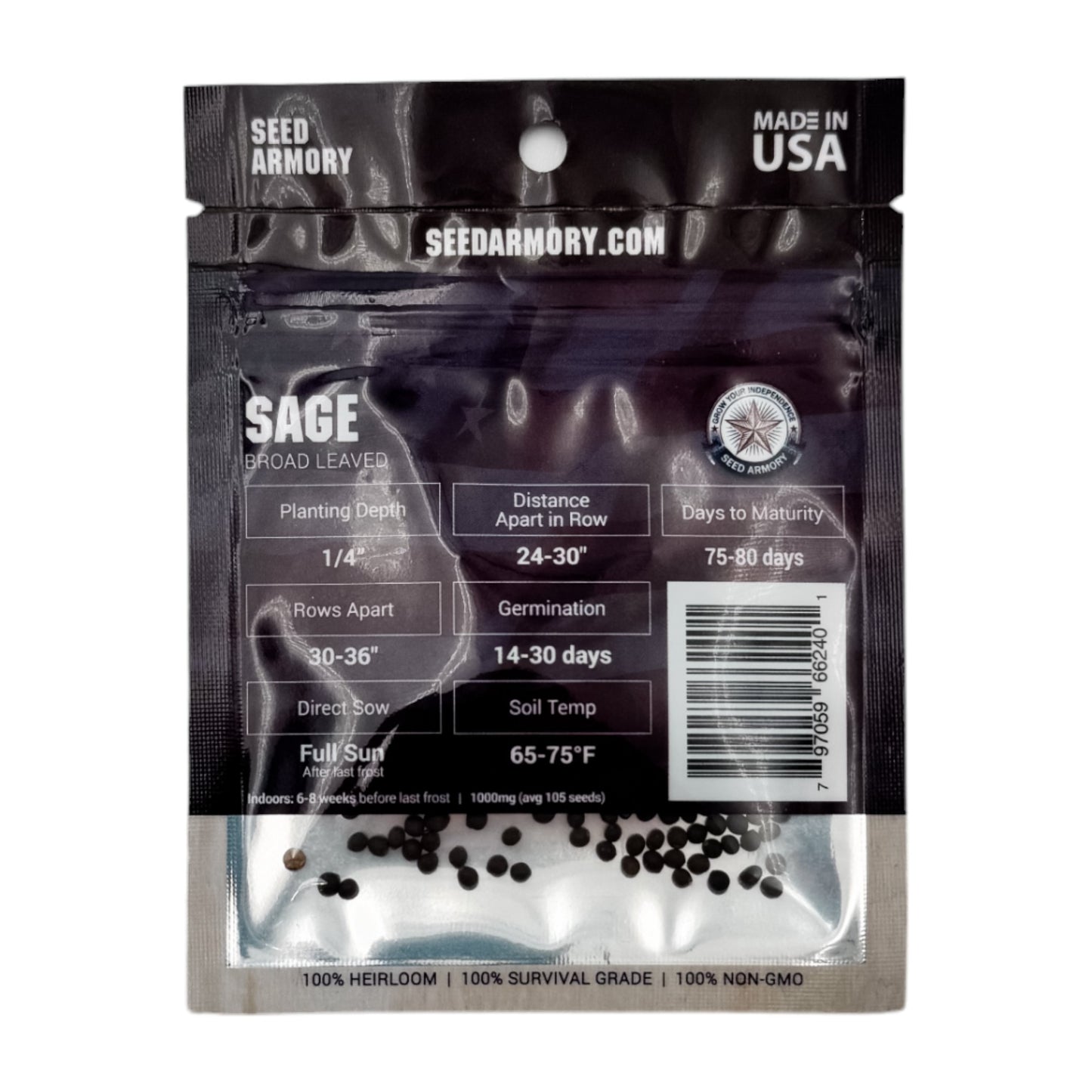
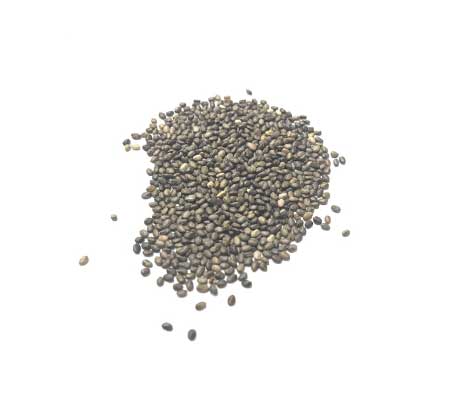
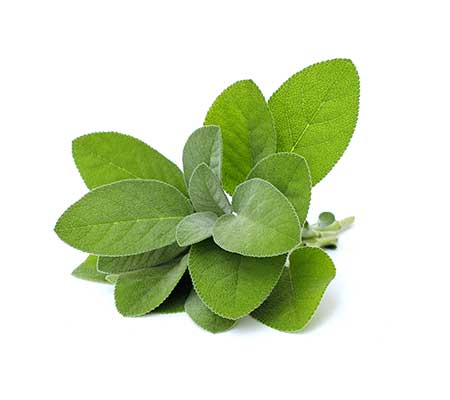
Sage Seeds - Common


